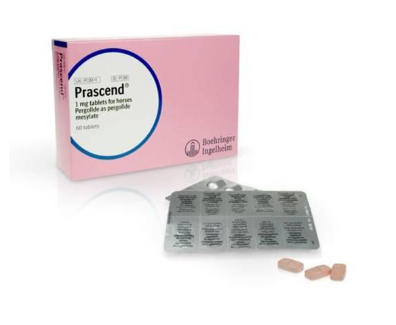Written By: Dr Tina Harasha, DVM
Equine Cushing's disease is more correctly known as pituitary pars intermedia dysfunction (PPID). It is the most common age-related endocrine disease in horses. It affects 1 in 7 horses and ponies over the age of 15 years old and 1 in 3 over the age of 30.
What causes PPID?
PPID occurs when neurons in the hypothalamus undergo chronic damage due to aging. The hypothalamus controls hormone secretion of the pituitary gland. When damage occurs to the hypothalamus it can no longer regulate the pituitary gland secretion of ACTH. This increases ACTH levels which increases cortisol levels (stress hormone) that leads to the clinical signs of PPID.
Image from vetmed.umn.edu
Clinical signs of PPID
Hoof radiograph showing laminitis
The most classic clinical sign is a long curly retained hair coat called hirsutism. This is often noted in the spring and summer when a horse that previously shed their winter coat holds onto their hair longer. Another common clinical sign is an ambiguous body condition. This includes having fat pads in areas such as their neck and at their tail head but they may also have ribs showing and a loss of muscle mass in other areas. One of the most significant clinical signs of PPID is laminitis and it is also the main cause of euthanasia due to PPID. Other more subtle and nonspecific clinical signs include decreased performance, recurrent infection, soft tissue injury, infertility, increased drinking and urinating, and abnormal sweating.
Diagnosis of PPID
If you see the clinical signs listed above in your horse, talk to your veterinarian about PPID. Your veterinarian will make a diagnosis based on clinical signs and bloodwork. The two most common types of testing are a resting ACTH level and a TRH stimulation test. The resting ACTH measures the level of ACTH in your horse's blood. The TRH stimulation also tests ACTH levels but is helpful in finding earlier stages of disease that may have a false negative result on the resting ACTH. ACTH is affected by the time of year so talk to your veterinarian about the best time of year to test and how time of year will affect the interpretation of the results.
Treatment of PPID
The current gold standard for treatment is a medication called pergolide. This medication works by decreasing levels of ACTH which then leads to a decrease in cortisol levels. This medication does not cure PPID but it manages the symptoms by decreasing the levels of circulating cortisol. It is a life long medication and the dose may need to be adjusted as your horse ages. ACTH levels can be rechecked after treating for 1 month to guide dose recommendations. Currently the only FDA approved formulation of pergolide is Prascend. When compared with compounded pergolide only Prascend was shown to remain at stable levels of potency and contain the correct concentration of pergolide. It is very important that this medication stays in the packaging it comes in until administered. The nitrogen filled blister pack prevents oxidation of the medication which would decrease the potency of the medication over time.
Dietary management is also an important consideration when managing PPID horses. Some horses who have PPID may also have a separate metabolic condition called equine metabolic syndrome. Talk to your veterinarian about the best dietary management for your horse.
Management of symptoms may also be required during treatment of PPID such as body clipping a long hair coat, managing laminitic episodes and managing infections and injuries. Your veterinarian can guide you through the best management of your horse and their clinical signs.

























